If you picture Mallorca as no more than a series of beach resorts, crowded with sun bathers and party goers, then think again. There are still plenty of unspoilt spots both inland and along its coast, while the island’s elegant and thriving capital Palma has all the culture you could want. A drive or taxi journey of just fifteen minutes from Palma airport will take you to the old town, which is situated around the cathedral on the sea front. Accommodation in this area will give you breathtaking views over the harbour and the blue Mediterranean, but there are other hotels amongst the medieval streets and squares.
The city has been compared to another well-known Catalan gem, with both having cathedral connections to the artist Antoni Gaudí. Although he famously didn’t finish Barcelona’s La Sagrada Familia, he designed the interior of Palma’s Gothic-style La Seu, together with contemporary artist Miquel Barceló, to stunning effect. Look out especially for his stained-glass windows (a test-run for Barcelona), furniture, and wrought-iron Crown of Thorns over the altar.
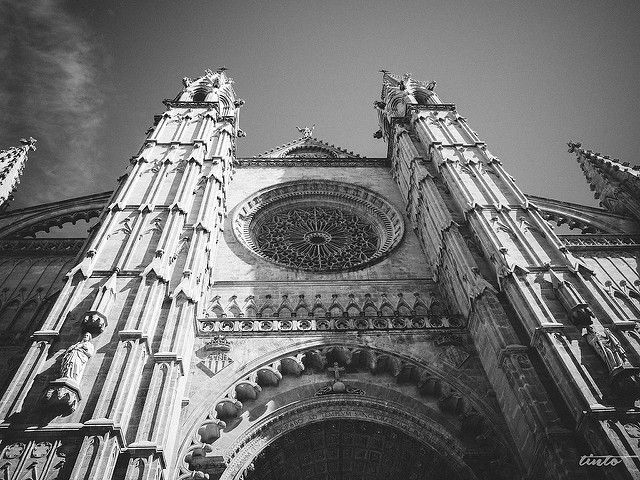
La Seu
The site was first occupied by a mosque where the island’s Arab rulers prayed. The royal palace opposite, Palau de l’Almudaina, was once an Islamic fort and it retains original features. Visitors from the seaward side would have entered by way of the Arc de sa Drassana bridge, which still stands today. Within the town, two rooms remain of the Banys Àrabs or Arab Baths, installed at some point between the tenth and twelfth century, with a domed roof held up by columns that partly consist of recycled Roman materials.
After this, relax in the nearby Parc de la Mar and admire the tiled mural by artist Joan Miró, whose house in Cala Major is now an amazing museum. Art galleries within the city include Palau March with its twentieth-century sculptures and paintings, and Es Baluard, set into the Renaissance-period seaward wall and boasting a fine contemporary collection.
The Centre Cultural Contemporani Pelaires, the City’s first space dedicated to contemporary art, is housed in the lovely seventeenth-century town house of Can Verí. A building from the same era is home to the Centre de Cultura Sa Nostra, but it acquired some modernist features after renovation. Don’t miss its temporary exhibitions, or the attractive eighteenth-century courtyard and café. The older-established Circle of Fine Arts (Círculo de Bellas Artes) dates back to the Spanish Civil War, and champions art and literature in the baroque surroundings of Casal Balaguer.
Fans of Art Nouveau and modernism will enjoy Mallorca’s take on these trends. Wander the winding streets and you’ll come across brightly-coloured houses whose patterns seem to dance in front of you, or green-and-gold facades that glint in the sunlight. In Plaça de Weyler, stop first in front of the Gran Hotel, once the city’s first luxury accommodation and now the CaixaForum cultural centre, and then turn to view the exterior of the Forn del Teatre pastry shop opposite.
Continue the theme at Can Casasayas and Pensión Menorquina on the Plaça del Mercat, with their undulating window and balconies that mimic the waves of the port, while the striking C’an Rei awaits you on the Plaça del Marques de Palmer. Or sidle up to the door of Can Forteza Rey on Carrer Monges, now offices, for a glimpse of the entrance hall’s tiled mosaic ceiling.
The waterfront, which goes all the way to the ferry port and cruise terminal 3.5km away, is ideal for pedestrians and cyclists. Then you might like to end your cultural trip with some music and a little Spanish wine – there is something for all tastes and in venues of any size, indoors or out.
Don’t forget to book your airport transfer with Holiday Transfers when you visit!

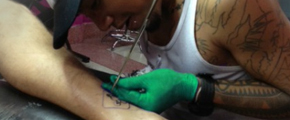 Getting a Bamboo Tattoo in Thailand
Getting a Bamboo Tattoo in Thailand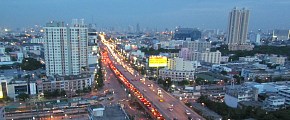 1 Year Living in Bangkok
1 Year Living in Bangkok 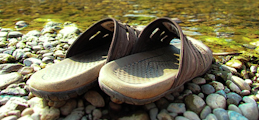 Packing List Revisited 2013
Packing List Revisited 2013  Tiger Kingdom, Chiang Mai, Thailand
Tiger Kingdom, Chiang Mai, Thailand 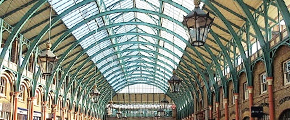 Covent Garden, London, UK
Covent Garden, London, UK 

{ 0 comments… add one now }